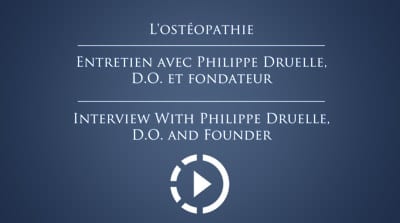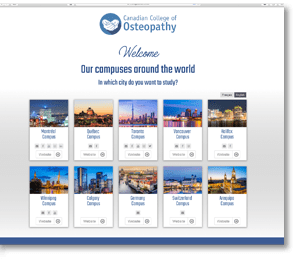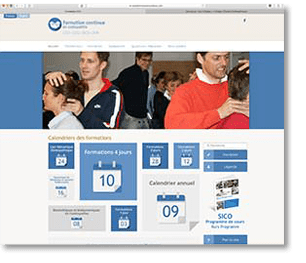550,
Ave
Beaumont,
suite
500
Montreal,
Quebec
H3N
1V1
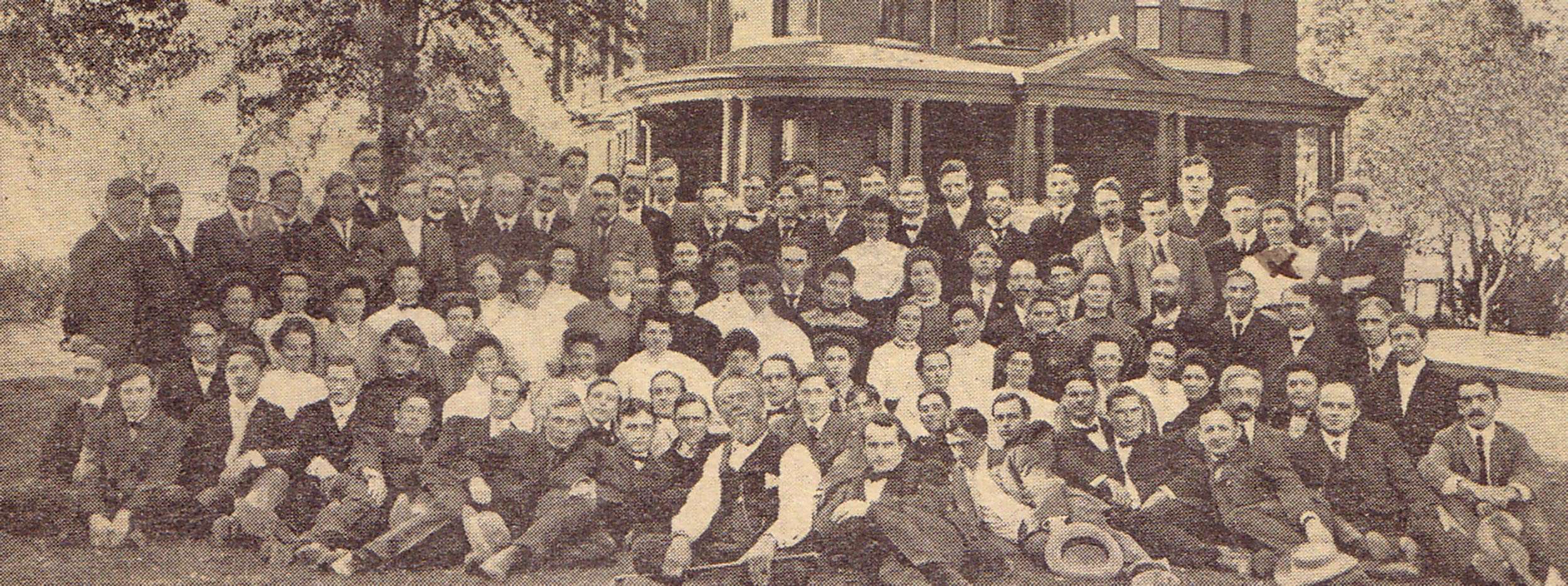
Class of 1909 with Doctor Andrew T. Still
Tradition, Clinical Methodology, Research and Know-How
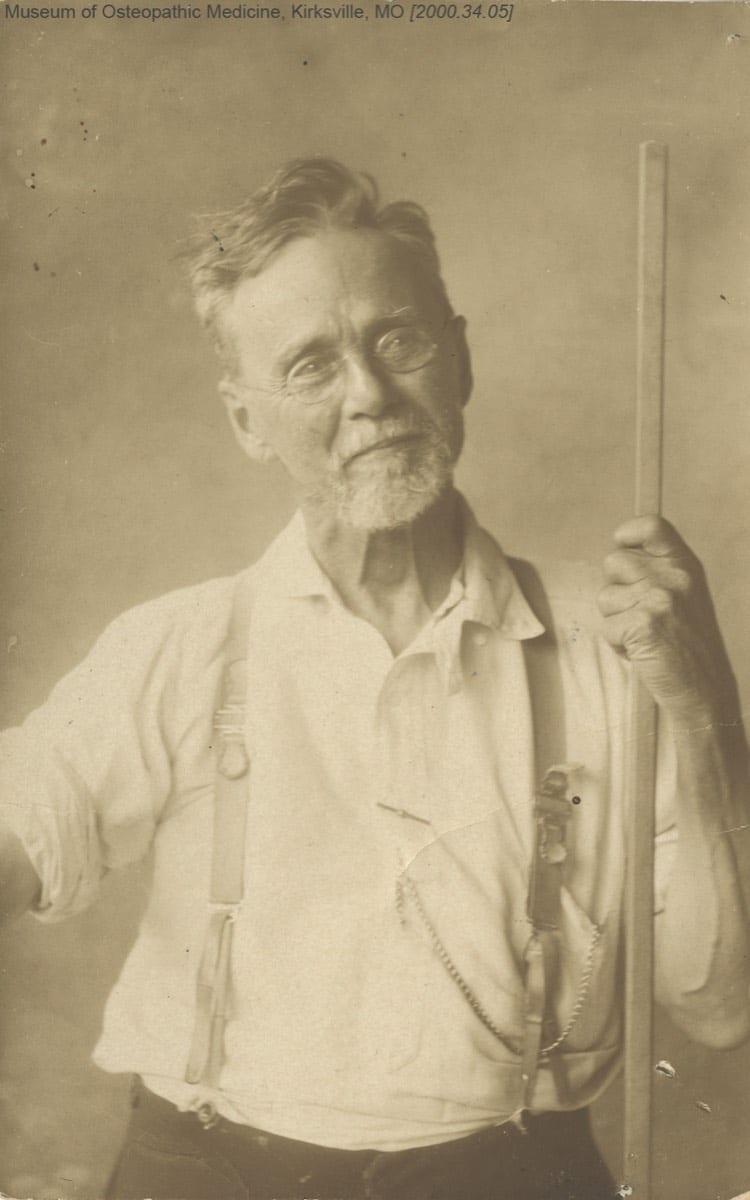
Dr. Still founded osteopathy on June 22nd, 1874
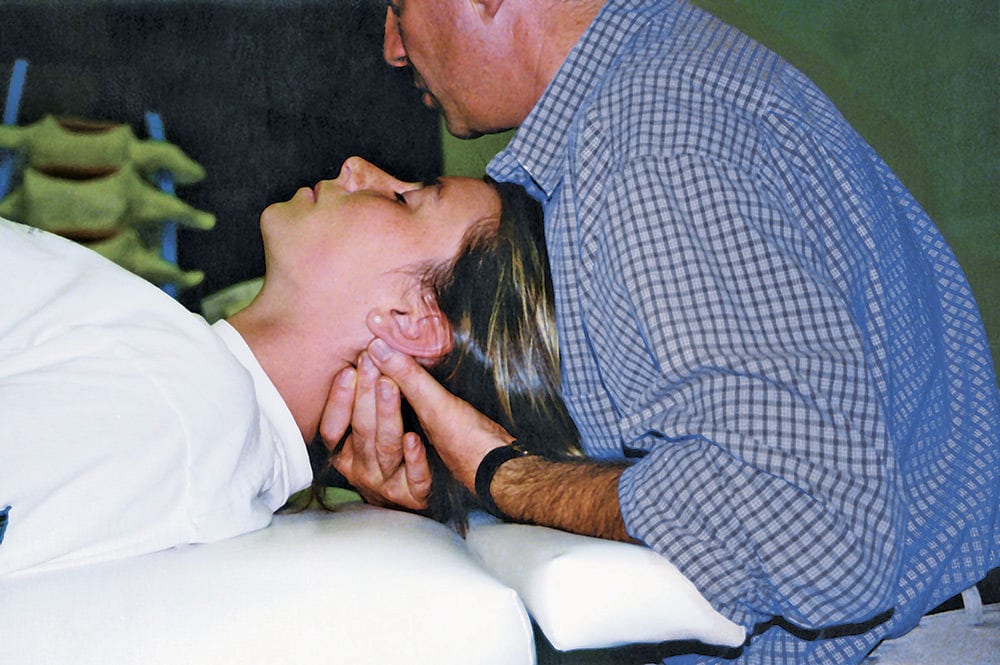
Normalization of the C0/C1
In
1874,
Dr.
Andrew
T.
Still,
doctor
and
founder
of
osteopathy
defined
it
as
a
natural
medicine.
He
used
the
quality
of
his
palpation
to
evaluate
and
treat
his
patients.
The
originality
of
his
practice
lay
in
the
fact
that
he
focused
on
restoring
health
rather
than
only
fighting
the
symptoms
of
disease.
The
therapeutic
goal
of
osteopathy
is
to
restore
the
movement
and
function
of
the
mechanisms
that
keep
the
organism
healthy.
To
accomplish
this,
it
is
important
to
evaluate
and
treat
the
causes
of
symptoms,
pain
and
dysfunctions.
Osteopathy
is
a
science,
a
palpatory
art
and
a
rigorous
clinical
methodology
based
on
precise
palpations
with
a
goal
of
freeing
the
organism’s
different
tissues
of
their
restrictions,
blockages
and
compressions
so
they
can
accomplish
their
natural
functions.
The
objective
of
the
professional
practice
of
osteopathy
is
to
restore
the
movement
of
the
structures
and
functions
of
the
body
(bones,
joints,
ligaments,
muscles,
tendons,
organs,
viscera,
cranial
sutures,
etc.).
This
allows,
among
other
things,
the
improvement
of
the
blood
and
lymphatic
circulation
and
promotes
the
metabolic
exchanges
between
the
body’s
systems,
nerve
functions,
the
vascularisation
of
the
digestive,
pulmonary,
cardiac,
reproductive
and
eliminatory
systems,
the
cerebral
dynamic
and
many
other
functions
in
the
body.
To
achieve
this,
the
patient
is
always
treated
as
a
whole.
The
concepts
and
principles
set
out
by
Andrew
T.
Still
are
still
alive
and
applicable
towards
developing
a
clinical
methodology.
These
are
the
principles
on
which
we
have
based
our
curriculum.
History of Osteopathy
The United States: The Cradle of Osteopathy
Dr.
Andrew
T.
Still
developed
the
principles,
concepts
and
original
methods
of
evaluation
and
manual
osteopathic
treatment
in
the
United
States
during
the
nineteenth
century.
He
was
born
in
Virginia
in
1828
and
studied
medicine
in
Kansas
City,
where
he
acquired
excellent
knowledge
in
anatomy
and
physiology.
A
curious
and
rational
spirit,
he
quickly
established
connections
between
structural
issues,
functional
issues
and
illness.
Devoted
to
his
patients,
Dr.
Still
was
devastated
by
the
loss
of
his
wife,
three
of
his
children
and
many
of
his
patients
following
a
meningitis
epidemic
in
1864.
This
event
had
a
decisive
role
in
his
awareness
the
limits
of
traditional
medicine
and
medication.
He
then
stopped
practicing
to
study
and
look
for
other
ways
to
treat
his
patients
more
effectively.
His
experience
as
a
doctor
and
an
anatomist
allowed
him
to
participate
in
the
Civil
War
as
a
surgeon
with
a
desire
to
practice
reconstructive
surgery.
After
ten
years
of
research,
he
returned
to
his
patients
with
a
new
way
of
seeing
treatment,
which
led
him
to
officially
create
the
term
“osteopathy”
on
June
22nd,
1874.
This
new
method
was
based
on
concepts
and
principles
that
are
still
relevant
and
that
represent
the
foundations
of
traditional
manual
osteopathy.
At
that
time,
Dr.
Still
understood
that
the
equilibrium
of
health
involves
the
balance
of
the
bone
structure,
which
is
responsible
for
the
harmony
of
the
nervous,
facial
and
circulatory
systems.
He
also
observed
that
the
health
of
the
organs
and
that
of
the
musculoskeletal
system
were
linked
and
interactive.
He
even
formulated
the
following
postulate:
“Structure
governs
function.”
From
this
postulate,
he
finally
put
forward
the
main
principles
underlying
the
clinical
methodology
and
the
therapeutic
specificity
of
osteopathy.
They
can
be
summarized
as
follows:
- Structure and function are related;
- The body is a functional unit;
- The role of the artery is absolute;
- The body possesses its own ability to autoregulate, defend and recover.
In 1917, Osteopathy took root in Europe thanks to Dr. John Martin Littlejohn, D.O., a student of Dr. Still. He founded the British School of Osteopathy, the first school of osteopathy in England. The European School of Osteopathy in Maidstone as well as other institutions allowed English Osteopathy to become an important part of the English healthcare system. Today, the largest schools are affiliated with universities.
In France, we have found traces of a school and a book written in French in 1913. Dr. Major Stirling, D.O., settled in France and began to teach osteopathy to a group of doctors. However, osteopathy did not become popular until the 1960s. The first course on osteopathy applied to the cranial sphere was given in Paris in 1965 by Thomas Schooley, D.O., Harold I. Magoun, D.O., and Viola M. Frymann, D.O. All three were former students of William Garner Sutherland, D.O.
Two famous French osteopaths were present: Francis Peyralade, D.O., and Bernard Barillon, D.O. The first French colleges became the roots of other institutions in Belgium, Spain, Italy, Portugal, Switzerland, and Germany. French osteopathy is highly respected and mainly expresses itself in the evolution of this medicine at the visceral sphere level with Jean-Pierre Barral, D.O., Jacques Weischenk, D.O., and René Briend, D.O.
In the United States, osteopathy evolved through the years towards the practice of medicine and surgery, leaving traditional osteopathy based on palpation and manual therapeutic methods behind. However, the American Academy of Osteopathy has made every effort to preserve the philosophy and original potential of osteopathy. Osteopathic medicine is currently taught in 15 universities in the United States.
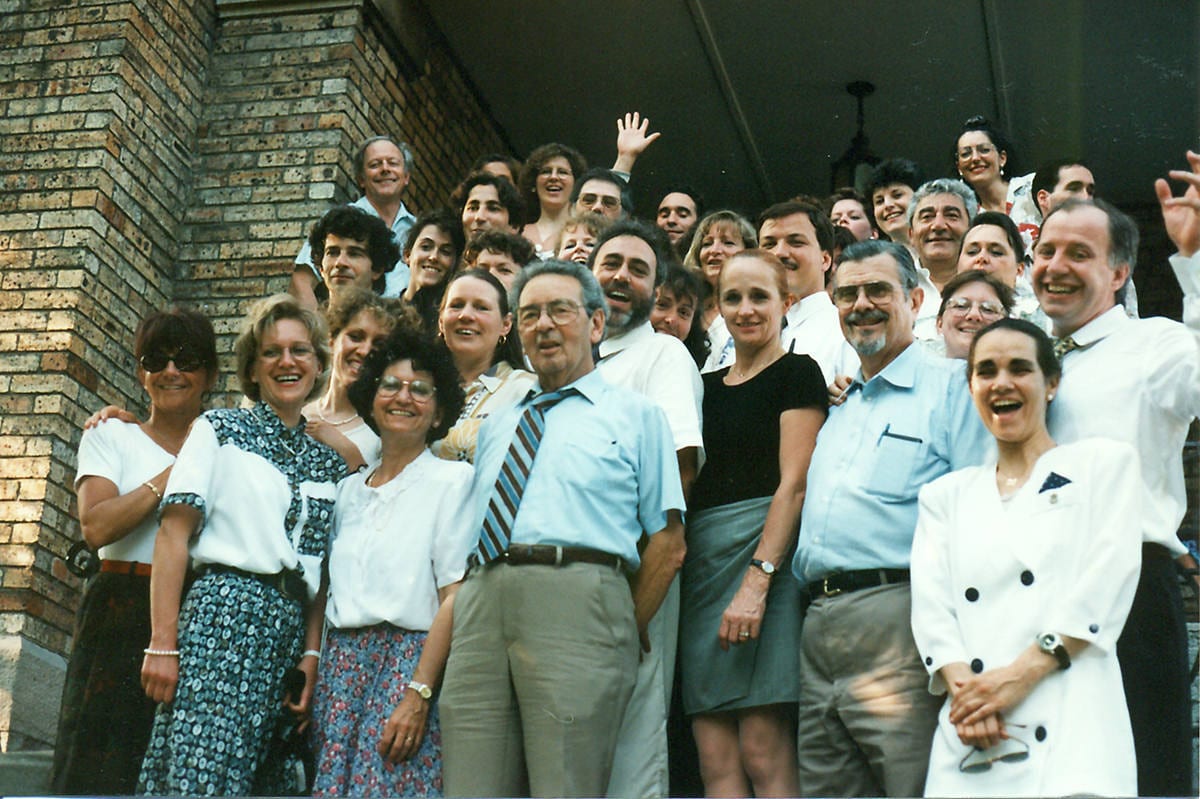
Ivan Korr, PhD; Fred Mitchell, D.O.; Philippe Druelle, D.O.; Bernard Darraillans, D.O.; Jean-Guy Sicotte, MD, D.O. at the Maison de l’Ostéopathie in 1995
The CEO in Quebec and Canada
The
CEO
was
founded
on
March
11th,
1981
in
Montreal
by
Philippe
Druelle,
D.O.,
an
osteopath
trained
in
France,
assisted
by
Dr.
Jean-Guy
Sicotte,
MD,
D.O.
This
college
was
the
first
of
its
kind
in
Canada
to
offer
a
comprehensive
program
and
teach
traditional
manual
osteopathy.
From
its
foundation
to
today,
the
goals
of
the
CEO
are
the
same:
- Transmit knowledge and know-how of the application of techniques and manual osteopathic therapeutic methods;
- Provide effective means of learning to develop the osteopath’s ability to think critically, which will enable him or her to find solutions to complex problems presented by their patients;
- Promote research along with training courses to carry out qualitative, clinical or fundamental research projects.
Recently, the CEO established a partnership with the Catholic University of Santa María in Arequipa, Peru and offers a five-year program in osteopathy to healthcare professionals.
Today, 70% of osteopaths practicing in Quebec and Canada are graduates of our colleges. Furthermore, our graduates are recognized by the professional association “Ostéopathie Québec.”
Contact Us
550,
Ave
Beaumont,
suite
500
Montreal,
Quebec
H3N
1V1
Tel.:
(514)
342-2816
Tel.:
514-342-2816
Fax:
(514)
731-7214
[email protected]


